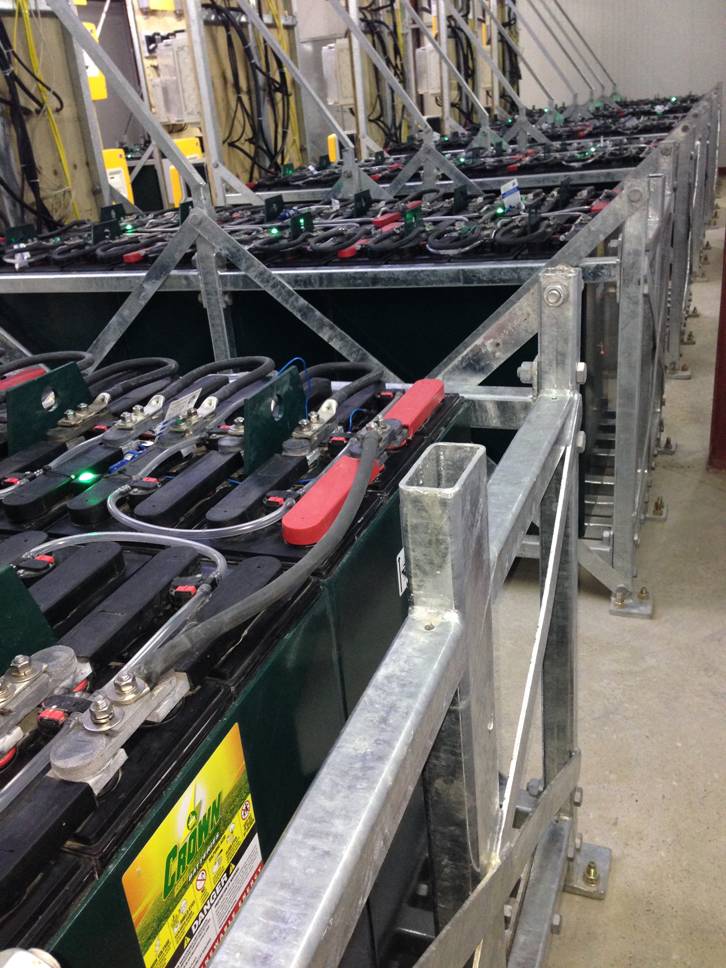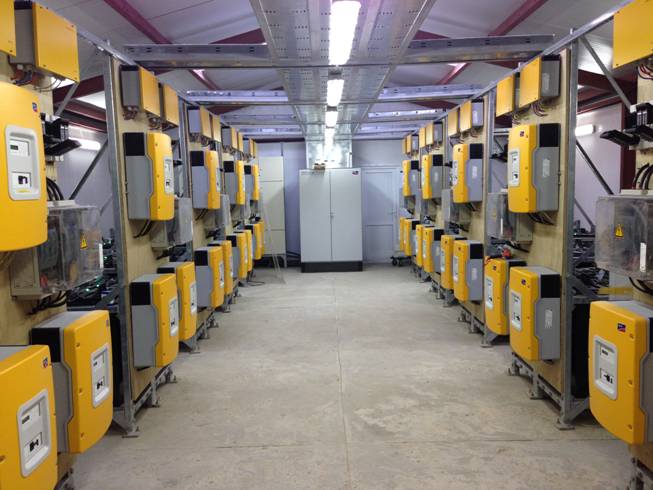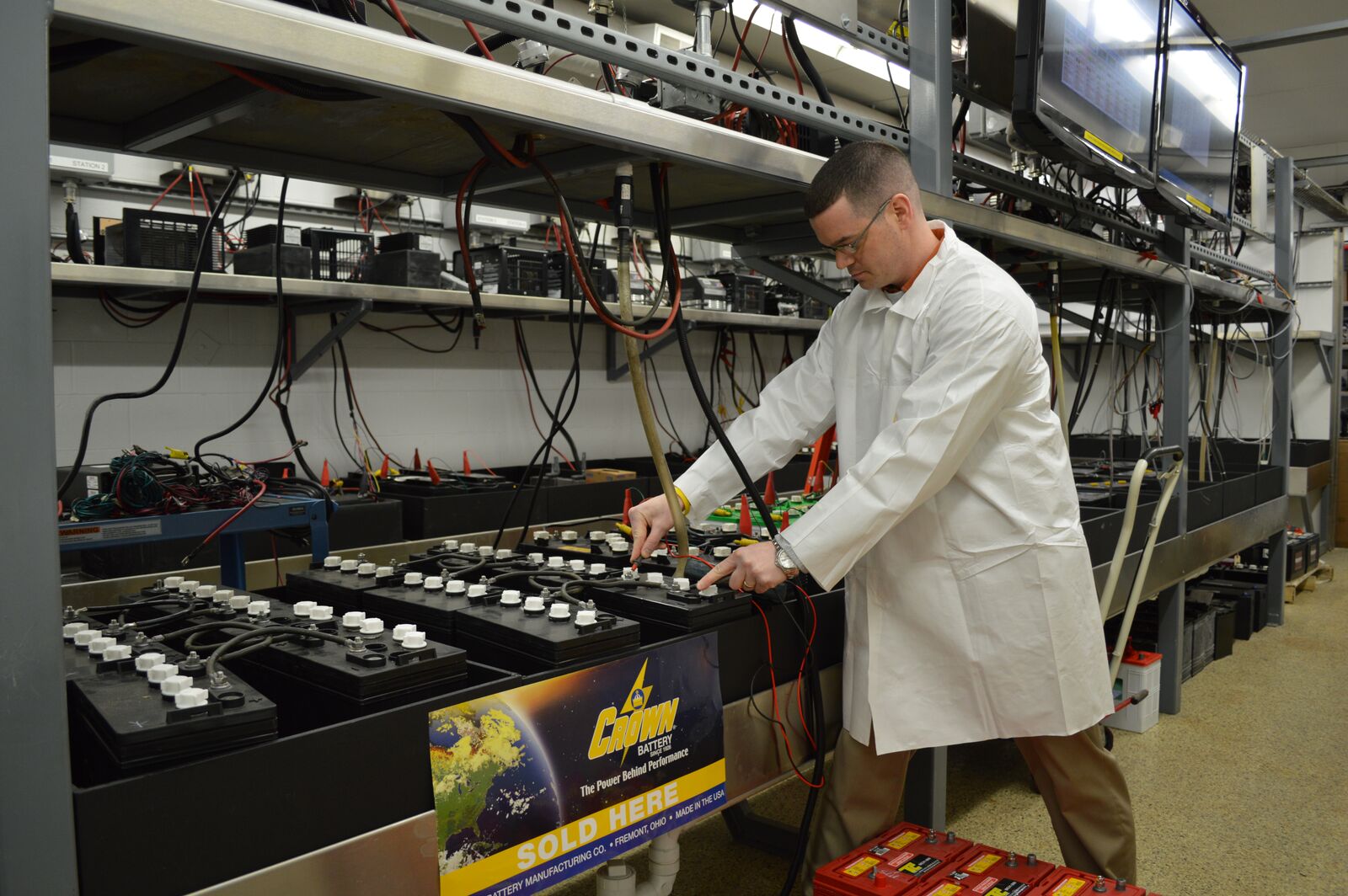Find the Battery You Need
Batteries are the backbone of renewable energy (RE) systems, enduring constant charging and discharging (deep cycling) for years. There is no perfect, one-size-fits-all battery for RE.
But there is a best battery technology for your system -- and in this article, you'll learn exactly how to find it.
First, a Crash Course in Battery Technologies
Lead-acid batteries are the most-used RE storage batteries. They offer high reliability, easy installation, and medium power density - at a per-kWh cost 50-90 percent lower than other technologies.
Lead-acid batteries have been tested in laboratories and in the field for more than 100 years. Like the RE systems and cars they power, modern lead-acid batteries bear little resemblance to early models, with top manufacturers using robotic assembly, automation, and microscopically-optimized active material.
 Two types of lead-acid batteries are most common: flooded, and absorbent glass mat (AGM). Flooded batteries are long lasting, affordable, easy to maintain, and reliable. They require ventilation for safe operation. AGM batteries, originally designed for the military to improve aircraft reliability, offer additional advantages: no maintenance; charging up to five times faster than flooded batteries; and higher current delivery. In many systems, AGM batteries save more than enough time and money on maintenance to offset increased manufacturing costs and slightly reduced capacity. (See "How to Select the Right AGM Battery" from July/August 2015.)
Two types of lead-acid batteries are most common: flooded, and absorbent glass mat (AGM). Flooded batteries are long lasting, affordable, easy to maintain, and reliable. They require ventilation for safe operation. AGM batteries, originally designed for the military to improve aircraft reliability, offer additional advantages: no maintenance; charging up to five times faster than flooded batteries; and higher current delivery. In many systems, AGM batteries save more than enough time and money on maintenance to offset increased manufacturing costs and slightly reduced capacity. (See "How to Select the Right AGM Battery" from July/August 2015.)
Lithium-ion batteries have the highest power density and lowest weight, at a cost (up to 10X as much as lead-acid batteries per kWh). Like some lead-acid batteries, they do not require regular maintenance. Li-ion batteries have a shorter lifespan than lead-acid batteries and have been available in large format since 2007.
Li-ion's high power density comes at the increased potential for thermal runaway and fires. For safety, li-ion systems require purchase of a separate battery management system (BMS). BMS helps protect against cell damage, and reduces the risk of overheating, which can cause explosions and house fires. Check whether firefighters in your area have special training for lithium-ion fires; water can explode li-ion batteries, and batteries can reignite more than 24 hours after being "extinguished."
Sodium batteries have the lowest power density and surge capacity - so you'll need more of them. They're often rated at 2.6kW, just 48Ah per stack (20-hour basis), instead of the standard rating. Sodium batteries cost 3 times as much as sealed lead-acid for the same capacity. They also have the largest footprint, and are more than twice as heavy as lead-acid per kWh. (Lead-acid, in turn, is heavier than li-ion.)
Sodium is new to RE energy storage. R&D for consumer products began in 2008, and the first commercial product was released just three years ago. Unlike other technologies, sodium batteries are slow to charge and discharge -- manufacturers recommend at least 12 hours of sunlight per day. There are no published safety standards or best practice guidelines.
Recyclability
Lead-acid batteries are 99% recyclable - more recyclable than an aluminum can. According to the U.S. EPA, they're also the most recycled product (>99 percent) in North America, with old lead-acid batteries recycled into new ones. (See "Will It Recycle?" from May/June 2016.)
Lithium-ion batteries are between 0- 60 percent recyclable. They cannot be recycled into new batteries; all li-ion batteries use virgin-mined materials. According to the U.S. Geological Survey, four out of five lithium-ion batteries are landfilled at end of life.
Sodium batteries have no historical recycling data, and no national recycling system. Only their cases are recyclable.
The Truth about Depth of Discharge (DoD)
Manufacturers recommend DoD based on how low a battery can be drained without shortening its lifespan.
As an example, an 80 percent DoD rating for a sodium battery means that it can be drained until only 20 percent of its electricity remains.
 For RE users, 80 percent DoD is the equivalent of traveling across the desert with your gas light on... when there's no gas station in sight. Yes, you can run on fumes - but for how long?
For RE users, 80 percent DoD is the equivalent of traveling across the desert with your gas light on... when there's no gas station in sight. Yes, you can run on fumes - but for how long?
Every RE system needs a safety margin for stable voltage - for high-wattage appliances, large loads, and days when low solar or wind production require extra battery power.
No matter which battery technology you select, comparison shop based on 50 percent DoD, and install extra battery capacity to ensure this safety margin.
Keep the lights on (surge capacity)
Surge capacity is a battery's ability to handle short-term overload - this is critical if you want to run high-draw loads such as refrigerators, microwaves, A/C, and other devices that can require 2-7 times more power during startup.
Each battery technology has a different surge capacity:
- Lead-acid has the highest surge capacity.
- Li-ion has much lower surge capacity -- ~280Ah. (For reference, air-conditioning requires 1,200Ah surge capacity.) To achieve higher surge capacity, users must add batteries or load-shed (cut power to appliances)
- Sodium has the lowest surge capacity (102A). This means ~5 minutes of output at 1kW, so loads must be limited.
Be sure your manufacturer offers their surge capacity specifications in writing. Check on whether or not the manufacturer has had recent recalls - this could indicate poor design, corner-cutting, or financial trouble that could leave you high and dry. Select the right batteries for your system, and you'll get excellent performance for many years to come.
John Connell is the Vice President of Crown Battery's SLI Products Group. Crown Battery manufactures all its 99%-recyclable lead-acid batteries at its ISO-9001:2008-certified plant in Fremont, Ohio.
Crown Battery | www.crownbattery.com
Volume: 2017 November/December











